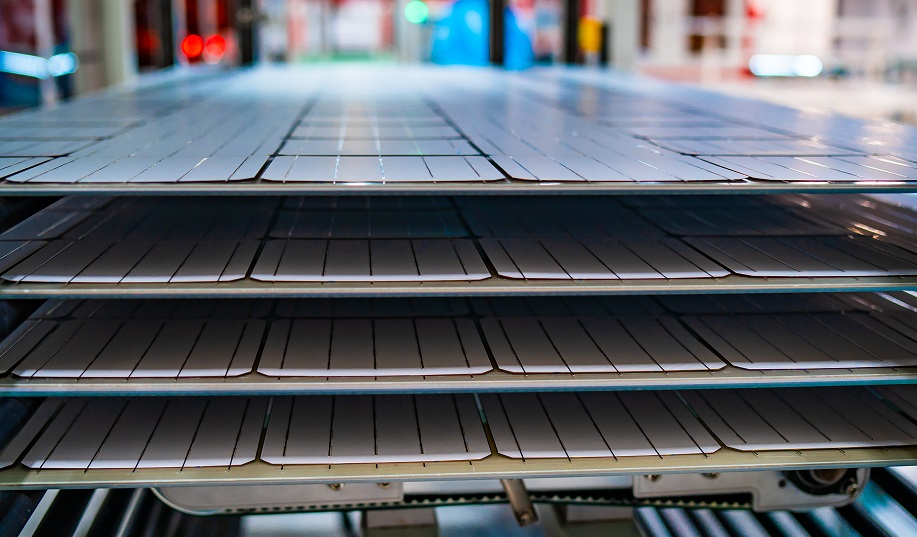
Flexible electronics
Flexible electronics is present in a wide range of industrial and consumer products. It makes electronic systems more flexible and lighter and thereby more efficient.

Automotive & EMI
Electronic systems printed on thin, flexible substrates help reduce weight, a major concern for electric vehicle production.

Medical
Printed electronics offer flexible and expandable options for key components of new healthcare devices that enable continuous, remote patient monitoring.

Energy
Printable solar cells offer exciting potential for producing electricity in a more versatile way and at lower cost. They can blend into many surfaces and power our homes wherever the sun shines.

RFID & Internet of Things
By connecting a multitude of objects together using antennas and sensors made up of flexible electronics, the IoT offers a wide variety of intelligent solutions that are revolutionizing our daily lives.

Printing Technologies
Printing processes are at the heart of flexible electronics. Whether intended for research and prototyping, or for industrial production, each process has its advantages and is based on constantly evolving equipment, materials and technologies.

Flexible electronics, a strong potential
Flexible electronics is present today in a wide range of industrial and consumer products. It makes it possible to soften and lighten electronic systems in the automobile, mobile phone, flat screens, tools for measuring human performance and health, labels for the identification or safety of products, sensors in aircraft, agricultural and environmental sensors, strain gauges in bridges and equipment, to name a few.
Printed electronics is one of the processes for manufacturing flexible electronic products. This consists of printing conductive inks on a substrate, the same way newspapers or labels are printed, as opposed to the traditional process of etching or chemical attack. This printing is possible thanks to functional inks: conductive, semi-conductive or insulating. This ability to print electronics makes it possible to use different types of media and components.

Automotive, Plastronics, IME: a bright futurer
Flexible electronics is a very promising innovation for the automotive industry. Electronic systems printed on thin, flexible substrates help reduce weight, a major concern for electric vehicle production. The adaptability of flexible electronics is also an asset in satisfying emerging automotive interior design tastes that prefer organic curves to flat surfaces.
The IME “In Mold Electronics”, or Electronics in the mold is a process of the future which mixes flexible electronics and plastic injection. Used to replace mechanical buttons and switches, parts made of IME are smart surfaces that use capacitive touch sensors and integrated lighting. The IME combines electronic, ornamental and mechanical features in one piece. This method uses conductive tracks printed by screen printing by incorporating surface mount devices on a film. Thermoforming and injection molding processes are then used to complete the manufacturing process.


Medical: great opportunities thanks to digitalization
There is a general trend towards the increasing digitization of medical techniques. Digital health solutions such as tele-health, online medicine, remote patient monitoring, make it possible to reconcile the return of patients to their homes while maintaining close contact with them. Moving from one-time tracking during each doctor’s visit to continuous tracking through connected medical devices can provide improved diagnostic capability and the ability to provide preventive care.
The principle of printed electronics provides flexible, bendable, expandable, compliant, and lightweight options for key components in these new health devices. This technology works particularly well for skin patches, smart wearables, and other remote patient monitoring or treatment devices that interface with skin and other tissues.

Energy: the enormous potential of printable solar cells
Will it be possible one day to power our homes with solar cells integrated in windows or curtains instead of rooftop panels? New technologies in flexible electronics may make it possible to insert photovoltaic elements on a wide range of surfaces and materials, thus creating printable and inexpensive solar cells.
Printable solar cells offer exciting potential for more flexible and cost-effective power generation wherever the sun shines. They are a possible alternative to the rigid panels that we usually see on the roofs of homes, made from silicon which is abundant but expensive to transform into wafers for solar panels.


RFID and IoT: solid values at the service of connectivity
RFID antennas have had a significant impact on retail, mass transit, healthcare, payment, security, and logistics sectors. There is at least as much value in the system and services as there is in the hardware, with the need to collect, filter and make profitable automated decisions with this information.
The Internet of Things (IoT) is a way to obtain a lot of data to better optimize operations, improve security, offer service, reduce costs and more. Based in particular on the use of antennas and sensors increasingly made of flexible electronics, the IoT exploits various technologies to provide solutions for a wide range of applications such as smart cities, smart homes, smart factories, connected cars, etc.

Printing technologies: major developments
Printing technologies can be divided into contact and non-contact techniques. Techniques with contact are for example screen printing, flexography, rotogravure and lithography (or offset), in which the printing plate is in direct contact with the substrate. Non-contact techniques are for example direct laser writing, spray printing, ink jet printing, micro-deposition where only the material to be printed comes into contact with the substrate.
Contact printing technologies are classic printing processes that are still predominant today. Suitable for industrial quantities, they allow high speeds and low unit printing costs, despite the need to manufacture a mask to transfer the image onto a support. Non-contact technologies have the advantage of reducing the risk of contamination or damage to the substrate and allow more precise pattern alignment. This last point is essential for manufacturing multilayer devices. The image to be printed is transferred digitally to the printer by computer without the need of any type of transfer tool.

A development project in Asia?
Discover Eastwesting’s services
